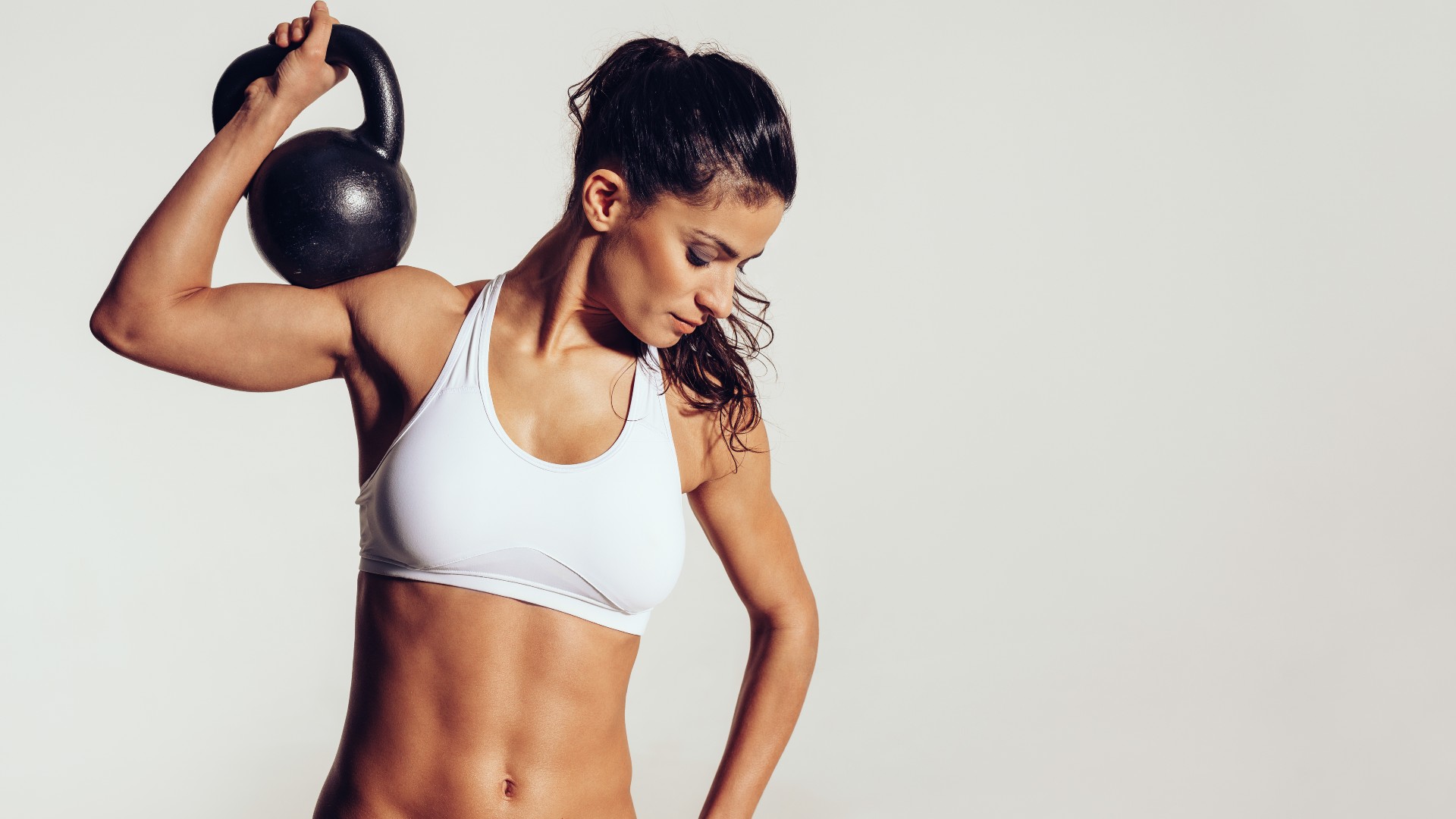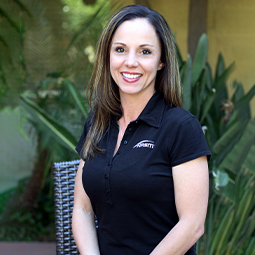I did kettlebell hip marches every day for a week — here’s what happened to my body
Say goodbye to tight hips with kettlebell hip marches

This year, I have really been focusing on strengthening my hips and knees, and discovering kettlebell hip marches has been a game-changer.
Why? As with many other runners, the areas I tend to feel the most pain in from running are my hips and knees. I convinced myself for too long that this was down to my height. Being taller, I had longer limbs to carry and this caused added strain, or so I told myself. But this was me simply ignoring the fact that working on strengthening these areas will in fact help injury-proof myself and just make me a better runner overall.
That’s when I found the gloriously challenging exercise best known as kettlebell hip marches. Have you ever tried hooking your foot through one of the best kettlebells and lifting your leg up while standing strong on your other foot? It’s kind of hard, but wow, does it feel like it’s doing my hip flexors a real big favor.
It turns out my hip flexors weren’t the only thing I was working on when I tried doing 24 kettlebell hip marches every day for a week. So I spoke to Wendy Batts, a NASM certified fitness instructor to find out a little more about this exercise and a proper walk-through on how to perform it correctly.

Wendy Batts is a regional master instructor for the National Academy of Sports Medicine (NASM) and an assistant professor for the exercise science programs at Pennsylvania Western University (PennWest). Wendy holds a Master's degree in Exercise Science and Health Promotion and is a licensed massage therapist specializing in neuromuscular therapy.
How to do a kettlebell hip march
According to Batts, kettlebell hip marches are a great exercise to challenge multiple core, hip, and leg muscles.
“The cool thing about kettlebell hip marches is that they not only work the muscles of the leg you’re lifting, but also the muscles of the leg you’re standing on,” she told me, “On the side of the leg you’re lifting, you’re primarily working the tibialis anterior muscle on the front of the lower leg/shin, hip flexors, abdominals and obliques, and quadratus lumborum muscle—which helps stabilize the pelvis and keep it level when balancing on one leg.”
That is a mouthful of muscles but, in short, these are all very important areas to be targeting in your training, and even better to find out what you can do with this one exercise. Here’s instructions on how to perform kettlebell hip marches.
Sign up to get the BEST of Tom's Guide direct to your inbox.
Get instant access to breaking news, the hottest reviews, great deals and helpful tips.
- Stand on one leg with the foot pointed straight ahead and slide the toes of the opposite foot underneath/through the handle of a kettlebell.
- Place hands on your hips and stand tall with your chest up and hips stacked in line with your knee and ankle of the stance leg.
- Flex/lift the toes of the foot in the kettlebell straight upward (think toes to nose) and take in a breath.
- Then, forcefully exhale while lifting the kettlebell from the floor by bringing your knee and thigh straight up to waist height. Pay attention not to rotate the leg (or foot) inward or outward, or crunch with the abs by tucking your hips under or dropping your chest down.
- Pause at the top, and then slowly lower the kettlebell back to the starting position—inhaling as you do so. Repeat the movement for the desired number of repetitions.
- Switch legs and perform on the opposite side of the body.
Note, if you struggle to maintain balance or can’t find a kettlebell that your foot fits through, you could instead hold the kettlebell in front of your chest and lift each leg in the same marching motion for a similar effect.
I did kettlebell hip marches every day for a week — here’s what happened to my body
Every day I aimed to do four sets of 12 marches, working with an 8lbs/3.5kg weight if I was working out at home with my adjustable kettlebell (I use the Bowflex Selectech 840 kettlebell) or the lightest kettlebell I could get my hands on at the gym and that my foot would fit through.
Strength levels will vary, especially with a balance based exercise like kettlebell hip marches, so make sure to practice without the weight and only progress onto using a light and manageable weight when you feel confident in your form.
It humbled me in the gym
Single-leg exercises are unforgivably more challenging than bilateral exercises. I try not to have any shame in the gym when I wobble into a Bulgarian split squat stance, or during a single leg deadlift, but I'll admit there is something embarrassing about losing your footing and wiggling to regain it. This was the same when I tried my first set of kettlebell hip marches.
Not only does it look a bit odd putting your foot through the weight instead of your hand, but it also requires a good base level of balance and stability to stay upright and in good form while lifting your leg through the movement. So if you are trying this for the first time, don't be scared to drop your ego and remember everyone else in the gym is too busy focusing on what they look like to notice what you are doing.
Like with anything, the more I practiced my kettlebell hip marches throughout the week the more stable I felt.
I felt it in more places than my hips
While performing the weighted hip marches, I could feel a real strain in my hip flexors, but not in a harmful way. It was more in a way that I could tell these hips needed this kind of strength and conditioning. I could feel this most when I lifted my working leg as high as possible. As Batts told me, doing this emphasizes the deep hip flexors, like the psoas, which in addition to flexing the hip, is also involved in stabilizing your lower back.
But as my week of kettlebell hip marches progressed, I also started to feel things working in my core and in the stabilizing leg.
Again, Batts made sense of this, “Because the psoas is deep to the ab muscles, you may feel this exercise in the lower abdominal region when performed correctly,” she explained, “Conversely, on the stance leg, the muscles that stabilize the foot and ankle, quadriceps, and outer hip and glute muscles are going to be working hard to maintain a stable and strong base for you to perform the hip march movement.”
I liked working on my balance and strength
It's no surprise that I haven’t built indestructible hip flexors from one week of kettlebell hip marches. However, with this exercise under my belt, I do feel better equipped to improve my balance, which will help my body's response to things like trips and bumps on a run or hike, lessening the risk of falls or injuries.
I also feel like the increased muscular strength and joint support from doing this move more regularly will help reduce any level of stress or pain I tend to experience in my hips when running or walking for long distances.
I did kettlebell hip marches every day for a week — verdict
I found this to be a really useful exercise and one that has many benefits. It's not something I'll continue to do every day but it has become a great finishing exercise for my strength sessions.
Whether you are looking to better your posture, up your yoga game, or make your body more resilient for your senior years, kettlebell hip marches are one to consider.
More from Tom's Guide

Jessica has been a fitness writer at Tom’s Guide since 2023, bringing three years of experience writing about health, fitness, and the great outdoors. Her passion for exercise began during her childhood, where she spent weekends hiking and competing in local athletics club events. After earning a master’s degree in journalism from Cardiff University, Jessica found the perfect way to combine her love of storytelling and fitness into a career.
Jessica is passionate about testing fitness gear and tech, using her reviews to help readers make informed buying decisions. She ran her first marathon in April 2024, finishing it in 3 hours and 48 minutes. Through her training, she’s developed a deep understanding of what it takes to grow as a runner, from effective workouts and recovery techniques to selecting the right gear for every challenge.
When she’s not at her desk, Jessica enjoys spending time in the kitchen crafting new recipes, braving cold water swims and hiking.

